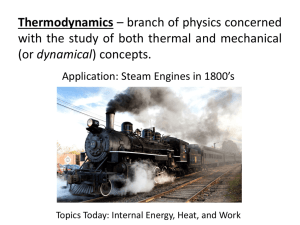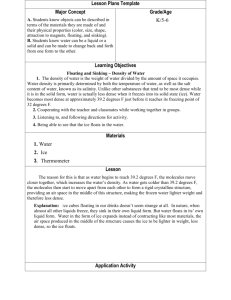Changes of State Notes - Red Hook Central School District
advertisement
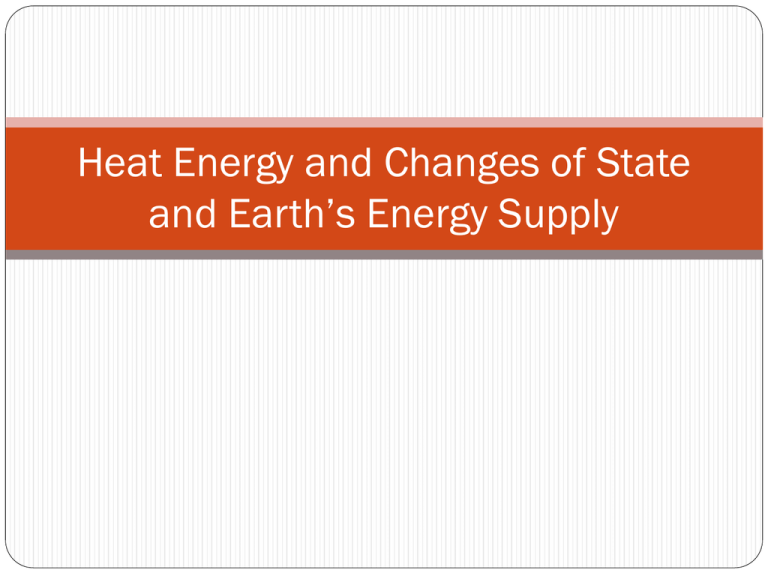
Heat Energy and Changes of State and Earth’s Energy Supply Types of Change of State *Note: Properties of water on ESRT page 1 PHASE CHANGE NAME Melting Solidification (Freezing) Crystallization PROCESS MATERIAL GAIN OR RELEASE ENERGY? Changing of a solid to a Gained liquid Changing of a liquid to a Released solid Changing to a solid with Released an ordered pattern EXAMPLE Left out ice cream Making ice cubes Rock candy Evaporation (Vaporization) Changing of a liquid to a Gained gas or vapor Vaporizer used when sick Condensation Changing of a gas or vapor to liquid Foggy mirror after shower Sublimation Changing of a gas Gain if going to Dry ice directly to a solid or gas, released if from a solid directly to a going to solid gas Released It takes much more energy to go from liquid->gas or gas->liquid than from solid ->liquid or liquid ->solid Stored Heat and Changes of State A material’s temperature rises as heat is added to it unless the material is in the process of changing state, then the temperature will remain the same as it is heated A cheesy 80s video to help explain the concept EUREKA!!! Stored Heat and Changes of State of Water Freezing point of water= 0 degrees C Boiling point of water= 100 degrees C When water reaches 0 degrees C or 100 degrees C, it will remain at that temperature for a period of time during the change in state This is due to the fact that the heat that is being added is being changed to stored heat (potential energy) Earth’s Energy Supply MEMORY JOGGER: The energy for Earth’s processes comes from mostly the sun but also Earth’s interior Solar Energy Earth receives electromagnetic energy of varying wavelengths from the sun Solar energy is produced by nuclear fusion (see notes on the sun in the astronomy unit) Earth's Own Energy Heat energy from Earth’s interior is converted into mechanical energy for mountain building, volcanic eruptions, plate movements and other internal movements Nuclear decay (aka nuclear fission): the process by which unstable elements split to form lighter elements, resulting in the release of high amounts of energy Nuclear decay is used to produce a portion of the nation’s electric supply (ie. Indian Point) EXIT PASS In groups of 3-4… Write ONLY the process. Be sure all names are on your paper Determine the change in state occurring in each of these examples: Example: Water turning into ice: liquid->solid (solidification) a. Dew on a car window b. A pot of water on a counter going from a level of 2 liters to a level of 1 liter in a period of 3 days c. A smoke machine at a dance d. Breathing on a mirror and fogging it up





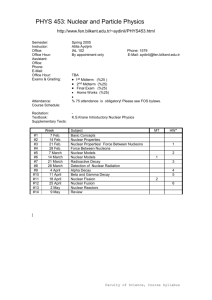
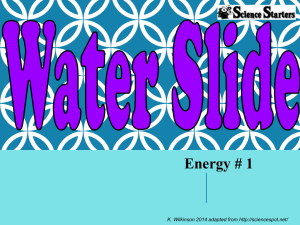


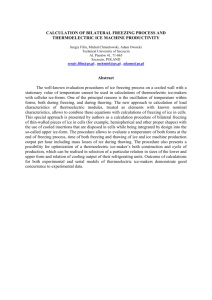



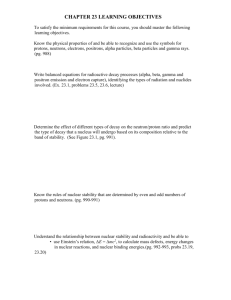
![The Politics of Protest [week 3]](http://s2.studylib.net/store/data/005229111_1-9491ac8e8d24cc184a2c9020ba192c97-300x300.png)
